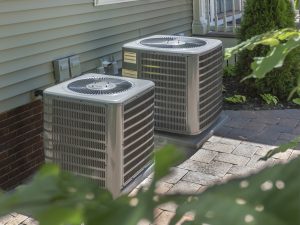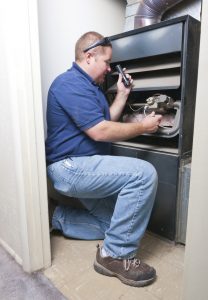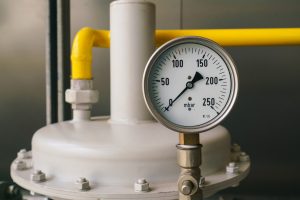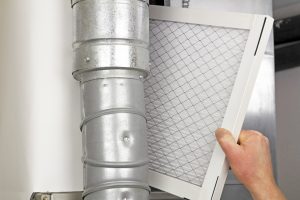
As winter comes to an end, there are many other things to be excited about besides taking your air conditioner out of retirement. From warm weather, to spring cleaning, and eventually the opening up of pools and outdoor activities, your air conditioner is probably the last thing on your mind. However, if you’re a homeowner that likes to be proactive in promoting the health and longevity of your AC system, now is the perfect time to do some handiwork.
Sure, if you were only to call for HVAC service in Pierceton, IN when repairs became clear, then your AC might last about 10 years—but if you’d like it to last beyond that, well into its 15th year, then it’s time to change some air filters and contact our team for regular AC maintenance.

 Geothermal heating and cooling systems are technologically advanced and environmentally friendly ways to keep your home comfortable. By even approaching the topic, we have to pull away from the average ways we heat and cool our homes, and dive more into the scientific nature of the earth, how temperatures are transferred, and where ingenuity can do something about it.
Geothermal heating and cooling systems are technologically advanced and environmentally friendly ways to keep your home comfortable. By even approaching the topic, we have to pull away from the average ways we heat and cool our homes, and dive more into the scientific nature of the earth, how temperatures are transferred, and where ingenuity can do something about it. Let us set up the scene for you. Imagine it’s a chilly spring day as you and your family mind your own business while watching TV or reading your new favorite book—and all of a sudden it starts to get cold. Your heater isn’t turning on and there’s clearly something wrong since your thermostat is usually set at a much warmer temperature than this. Your family looks to you to figure out what’s going on and you’re starting to panic.
Let us set up the scene for you. Imagine it’s a chilly spring day as you and your family mind your own business while watching TV or reading your new favorite book—and all of a sudden it starts to get cold. Your heater isn’t turning on and there’s clearly something wrong since your thermostat is usually set at a much warmer temperature than this. Your family looks to you to figure out what’s going on and you’re starting to panic. Furnace repair isn’t a word that homeowners want to hear, especially not when cold temperatures are still hovering at freezing. Though, what many homeowners don’t like to think about is the fact that
Furnace repair isn’t a word that homeowners want to hear, especially not when cold temperatures are still hovering at freezing. Though, what many homeowners don’t like to think about is the fact that  When it comes to furnaces, homeowners know the basic idea of how they work. A gas furnace burns fuel to create heat that transfers from a heat exchanger to the air duct system of your home. This heat is then distributed through your home, effectively heating your home and keeping each room to the temperature specification you set on your thermostat. Sounds simple enough, right?
When it comes to furnaces, homeowners know the basic idea of how they work. A gas furnace burns fuel to create heat that transfers from a heat exchanger to the air duct system of your home. This heat is then distributed through your home, effectively heating your home and keeping each room to the temperature specification you set on your thermostat. Sounds simple enough, right? Boiler leaks are unfortunately one of the worst experiences a homeowner can deal with. They can cause all sorts of damage to your home, can cause your heating bills to skyrocket, and can ultimately leave you without heat in the middle of the wintertime. Keep in mind that while we’ll talk about ways to notice if your boiler is leaking, or explore what might be going wrong with the system, we discourage any form of DIY repair work on a system like that.
Boiler leaks are unfortunately one of the worst experiences a homeowner can deal with. They can cause all sorts of damage to your home, can cause your heating bills to skyrocket, and can ultimately leave you without heat in the middle of the wintertime. Keep in mind that while we’ll talk about ways to notice if your boiler is leaking, or explore what might be going wrong with the system, we discourage any form of DIY repair work on a system like that. You’d be surprised by how many homeowners there are that don’t really know how their furnaces work. While it might be convenient to think of your heater like a magic box that makes heat, it’s more complicated and more interesting than that. Gas furnaces are marvels of modern technology, being able to burn fuel using combustion to turn cold air into warm air, they’re hyper-efficient these days and tend to run very affordably as well.
You’d be surprised by how many homeowners there are that don’t really know how their furnaces work. While it might be convenient to think of your heater like a magic box that makes heat, it’s more complicated and more interesting than that. Gas furnaces are marvels of modern technology, being able to burn fuel using combustion to turn cold air into warm air, they’re hyper-efficient these days and tend to run very affordably as well. While you might have heard us mention replacing your furnace filter time and time again, we’re still addressing the fact that many homeowners don’t know their furnace even has a filter! This is incredibly important to us because we’re all about providing quality maintenance to make sure that your furnace lasts as long as possible. A happy, healthy, furnace means low heating bills and a comfortable home for many years to come.
While you might have heard us mention replacing your furnace filter time and time again, we’re still addressing the fact that many homeowners don’t know their furnace even has a filter! This is incredibly important to us because we’re all about providing quality maintenance to make sure that your furnace lasts as long as possible. A happy, healthy, furnace means low heating bills and a comfortable home for many years to come. If you’re one of the many owners of a furnace or other type of heating system, you’re going to already be aware of a few signs that show problems are developing. While problems are important to address, and
If you’re one of the many owners of a furnace or other type of heating system, you’re going to already be aware of a few signs that show problems are developing. While problems are important to address, and  The holiday season is right around the corner! That means family, fun, food, and stress over how much money we’ll all be spending on everything. If you’re bombarded by your kids with what they all want for the holidays, the efficiency of your heating system is probably the last thing you want to hear about. Unless you’re coming up on a catastrophic heating repair that needs to be taken care of, you should focus on your holiday needs.
The holiday season is right around the corner! That means family, fun, food, and stress over how much money we’ll all be spending on everything. If you’re bombarded by your kids with what they all want for the holidays, the efficiency of your heating system is probably the last thing you want to hear about. Unless you’re coming up on a catastrophic heating repair that needs to be taken care of, you should focus on your holiday needs.